matplotlib plot markersize
在Matplotlib中,我们可以使用plot函数来创建各种不同样式和大小的数据点。其中一个关键的参数是markersize,用于控制数据点的大小。本文将介绍如何在Matplotlib中使用markersize参数来设置数据点的大小。
示例代码
示例1:设置数据点的大小为5
import matplotlib.pyplot as plt
x = [1, 2, 3, 4, 5]
y = [5, 4, 3, 2, 1]
plt.plot(x, y, marker='o', markersize=5)
plt.show()
Output:
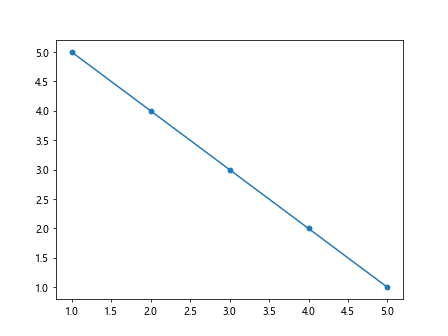
示例2:设置数据点的大小为10
import matplotlib.pyplot as plt
x = [1, 2, 3, 4, 5]
y = [5, 4, 3, 2, 1]
plt.plot(x, y, marker='o', markersize=10)
plt.show()
Output:
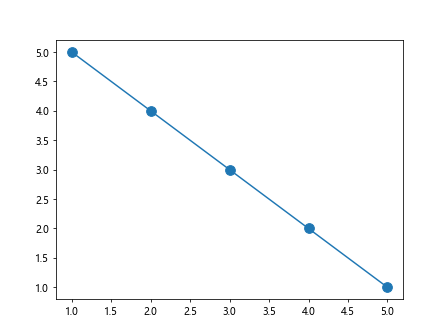
示例3:设置数据点的大小为15
import matplotlib.pyplot as plt
x = [1, 2, 3, 4, 5]
y = [5, 4, 3, 2, 1]
plt.plot(x, y, marker='o', markersize=15)
plt.show()
Output:
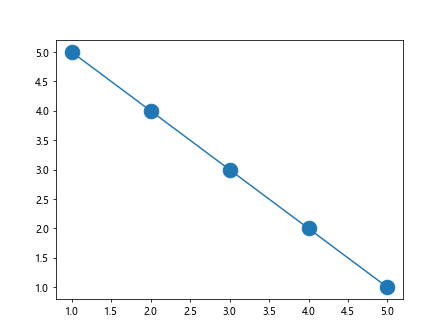
示例4:设置数据点的大小为20
import matplotlib.pyplot as plt
x = [1, 2, 3, 4, 5]
y = [5, 4, 3, 2, 1]
plt.plot(x, y, marker='o', markersize=20)
plt.show()
Output:
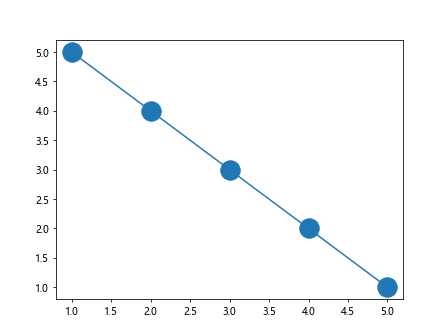
示例5:设置数据点的大小为25
import matplotlib.pyplot as plt
x = [1, 2, 3, 4, 5]
y = [5, 4, 3, 2, 1]
plt.plot(x, y, marker='o', markersize=25)
plt.show()
Output:
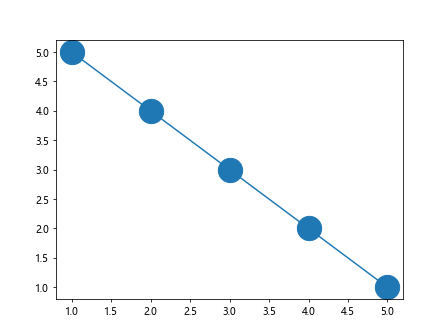
示例6:设置数据点的大小为30
import matplotlib.pyplot as plt
x = [1, 2, 3, 4, 5]
y = [5, 4, 3, 2, 1]
plt.plot(x, y, marker='o', markersize=30)
plt.show()
Output:
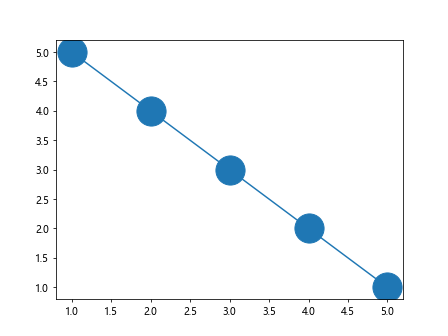
示例7:设置数据点的大小为35
import matplotlib.pyplot as plt
x = [1, 2, 3, 4, 5]
y = [5, 4, 3, 2, 1]
plt.plot(x, y, marker='o', markersize=35)
plt.show()
Output:
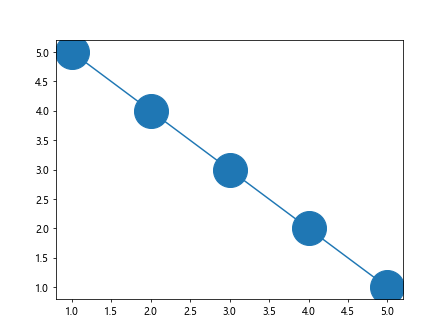
示例8:设置数据点的大小为40
import matplotlib.pyplot as plt
x = [1, 2, 3, 4, 5]
y = [5, 4, 3, 2, 1]
plt.plot(x, y, marker='o', markersize=40)
plt.show()
Output:
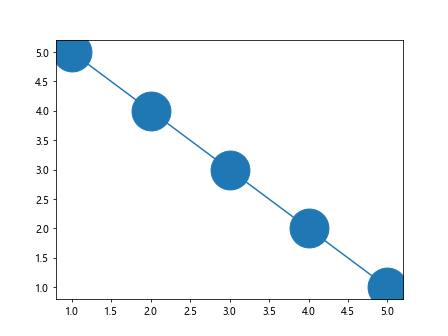
示例9:设置数据点的大小为45
import matplotlib.pyplot as plt
x = [1, 2, 3, 4, 5]
y = [5, 4, 3, 2, 1]
plt.plot(x, y, marker='o', markersize=45)
plt.show()
Output:
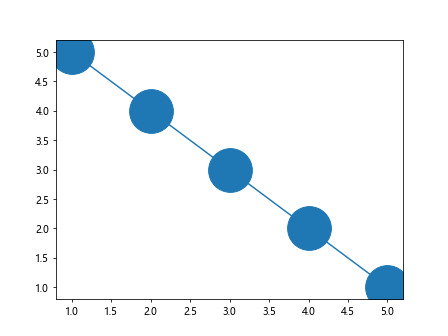
示例10:设置数据点的大小为50
import matplotlib.pyplot as plt
x = [1, 2, 3, 4, 5]
y = [5, 4, 3, 2, 1]
plt.plot(x, y, marker='o', markersize=50)
plt.show()
Output:
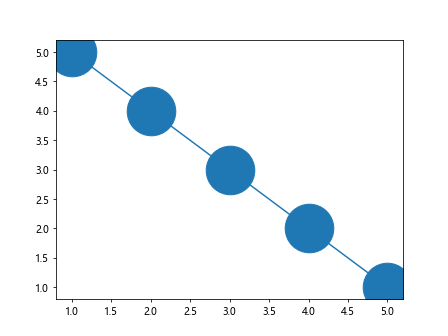
示例11:设置数据点的大小为55
import matplotlib.pyplot as plt
x = [1, 2, 3, 4, 5]
y = [5, 4, 3, 2, 1]
plt.plot(x, y, marker='o', markersize=55)
plt.show()
Output:
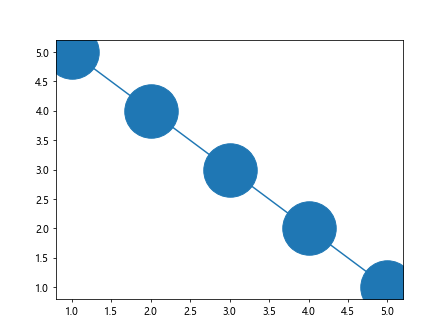
示例12:设置数据点的大小为60
import matplotlib.pyplot as plt
x = [1, 2, 3, 4, 5]
y = [5, 4, 3, 2, 1]
plt.plot(x, y, marker='o', markersize=60)
plt.show()
Output:
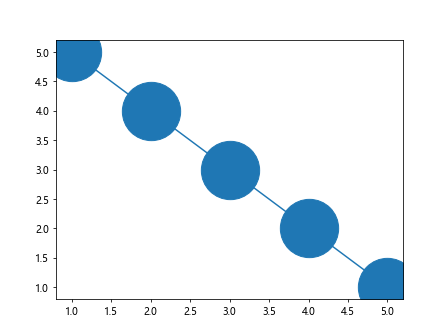
示例13:设置数据点的大小为65
import matplotlib.pyplot as plt
x = [1, 2, 3, 4, 5]
y = [5, 4, 3, 2, 1]
plt.plot(x, y, marker='o', markersize=65)
plt.show()
Output:
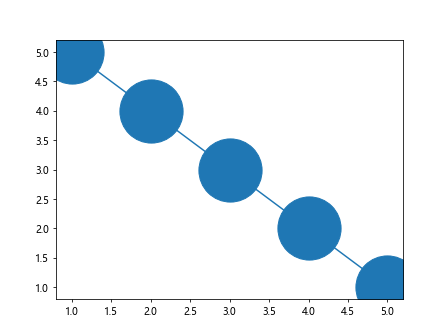
示例14:设置数据点的大小为70
import matplotlib.pyplot as plt
x = [1, 2, 3, 4, 5]
y = [5, 4, 3, 2, 1]
plt.plot(x, y, marker='o', markersize=70)
plt.show()
Output:
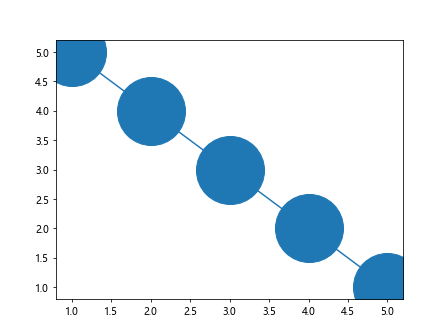
示例15:设置数据点的大小为75
import matplotlib.pyplot as plt
x = [1, 2, 3, 4, 5]
y = [5, 4, 3, 2, 1]
plt.plot(x, y, marker='o', markersize=75)
plt.show()
Output:

示例16:设置数据点的大小为80
import matplotlib.pyplot as plt
x = [1, 2, 3, 4, 5]
y = [5, 4, 3, 2, 1]
plt.plot(x, y, marker='o', markersize=80)
plt.show()
Output:
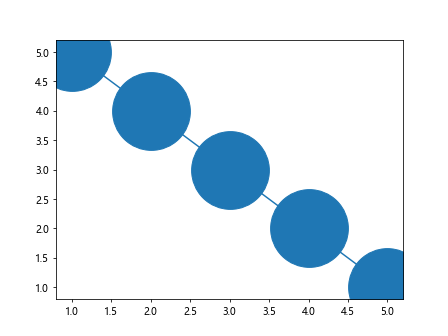
示例17:设置数据点的大小为85
import matplotlib.pyplot as plt
x = [1, 2, 3, 4, 5]
y = [5, 4, 3, 2, 1]
plt.plot(x, y, marker='o', markersize=85)
plt.show()
Output:
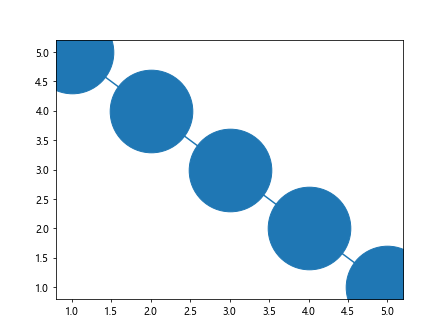
示例18:设置数据点的大小为90
import matplotlib.pyplot as plt
x = [1, 2, 3, 4, 5]
y = [5, 4, 3, 2, 1]
plt.plot(x, y, marker='o', markersize=90)
plt.show()
Output:
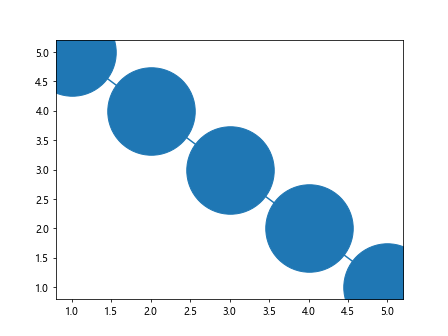
示例19:设置数据点的大小为95
import matplotlib.pyplot as plt
x = [1, 2, 3, 4, 5]
y = [5, 4, 3, 2, 1]
plt.plot(x, y, marker='o', markersize=95)
plt.show()
Output:
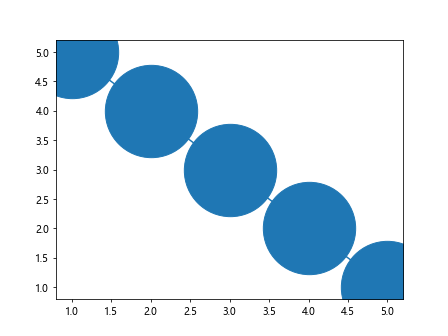
示例20:设置数据点的大小为100
import matplotlib.pyplot as plt
x = [1, 2, 3, 4, 5]
y = [5, 4, 3, 2, 1]
plt.plot(x, y, marker='o', markersize=100)
plt.show()
Output:
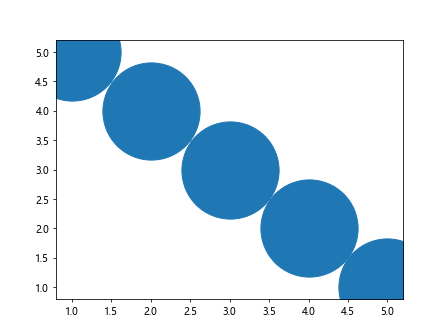
结论
通过上述示例代码,我们可以看到如何在Matplotlib中使用markersize参数来设置数据点的大小。根据需要,我们可以选择不同大小的数据点,以便更好地展示数据。 Matplotlib提供了丰富的参数选项,让我们可以灵活地绘制出符合要求的图表。
 极客教程
极客教程